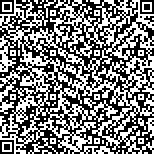本文已被:浏览 682次 下载 360次
Received:July 20, 2021 Published Online:February 20, 2022
Received:July 20, 2021 Published Online:February 20, 2022
中文摘要: 作为脑卒中最常见的并发症之一,偏瘫痉挛状态对患者的基本活动和日常生活造成极大影响,因此评定卒中患者的痉挛状态恢复程度是临床医生的重要任务。但现阶段临床研究中对于选择卒中后偏瘫痉挛状态的评价方法选择存在大量问题。本研究筛选出近十年临床研究中常用的卒中后偏瘫痉挛状态评价方法[痉挛状态及肌张力评价(ASS、MAS、CSI、MTS等)、运动功能评价(Fugl-Meyer运动功能评定量表、MSS等)、平衡能力评价(FM-B、BBS等)、日常生活活动能力评价(MBI、FIM等)],整理分类并对比分析,为临床工作者提供较为清晰的思路和引用文献。
Abstract:As one of the most common complications of stroke, the spasticity of hemiplegia has a great impact on the basic activities and daily life of patients. Therefore, it is an important task for clinicians to assess the recovery degree of spasticity of stroke patients. However, there are a lot of problems in the current clinical research for selecting the evaluation method of hemiplegia spasticity after stroke. In this study, we searched and screened the evaluation methods of post-stroke hemiplegia spasticity that were commonly used in clinical studies in the past ten years [spasticity and muscle tone assessment(ASS, MAS, CSI, MTS, etc.),motor function evaluation(Fugl-Meyer Motor scale, MSS, etc.),balance ability evaluation(FM-B, BBS, etc.),activity of daily living assessment(MBI, FIM, etc.)]. Comparative analysis provides clearer ideas and references for clinicians.
keywords: Stroke Spasticity of hemiplegia Evaluation Method
文章编号: 中图分类号:R743.3 文献标志码:B
基金项目:山东省中医药科技发展计划项目(2015-350);青岛市中医药科研计划项目(2020-zyy010)
引用文本:
